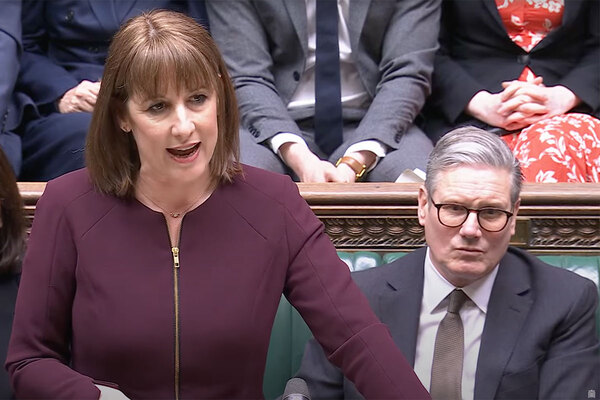As financial pressures intensify, managing risk is more important than ever
To weather the storm of mounting financial pressures, it is more important than ever that boards and management teams have a firm grip on their strengths and weaknesses, says Jonathan Walters
It will not have escaped the eagle-eyed readers of Social Housing that the Regulator of Social Housing’s (RSH) quarterly survey of private registered providers in England has been showing a tight financial position for some time now.
People will also know that in the past couple of years we have seen the number of organisations graded V2 increase significantly as we have reflected the difficult trading conditions for social landlords.
The figures from this year’s business plans show that this trend continues and that, while the sector retains many sources of financial strength, the pressures to be managed continue to intensify.
Although the sector still enjoys secure income streams, backed by housing benefit, relatively lowly geared assets and a range of levers it can pull to control expenditure, it also has to contend with spending more on its existing stock, a rising cost of capital and the need to build new homes.
However, beneath these familiar headlines there is a more nuanced picture and it is clear that not all providers are experiencing the pressures in the same way.
This is not to say that providing social housing anywhere in England is easy, rather that there are some locations and types of stock that are more challenging.
Challenging areas
By far the clearest example is the position for landlords with a significant presence in urban areas and with large numbers of flats that need further building safety remediation.
The place where this is most starkly demonstrated is London. Since the pandemic we have already seen a number of providers that fit this bill find stronger merger partners, and there are others that are already in public merger talks with other organisations.
But even those organisations that can manage these challenges alone are having to make some very difficult trade-offs.
The importance of building safety remediation – reinforced by the recent Grenfell Tower Inquiry report – on top of the financial impact of prioritising new supply during the period of rent cuts, means that many organisations in the capital are facing a challenging position.
The stock itself also tends to be more intensively used with issues around overcrowding and the need for regeneration making the traditional housing management service more costly.
Conversely, organisations with more homes in their stock make-up, and a more suburban stock profile, continue to have considerable financial strength and an appetite to deliver more new homes at scale.
However, even among this cohort there remain real challenges around the increased spend on repairs and maintenance needed, and the ability to recruit and retain the right staff is difficult across the country.
And on top of those day-to-day challenges is the need to be investing in stock to deliver energy efficiency and then the net zero agenda.
Regular review
Of course the picture across the country is more varied than a simple urban/suburban or London/non-London analysis would suggest, and all organisations will have their own specific set of challenges.
That is why, in addition to our four-yearly inspection cycle, we review the finances of large providers both quarterly and annually.
Between now and the end of the calendar year, you can expect to see refreshed viability judgements on almost all 200 providers with more than 1,000 homes, which between them own more than 2.6 million properties.
These judgements will allow us to reflect the way the various pressures in the social housing system play out across the sector and to be transparent with stakeholders on what we are finding.
As with our inspections, this review of financial and business plans always demonstrates the importance of good governance and risk management.
There is no doubt that the introduction of stress-testing (including having a clearly articulated risk appetite and mitigation plans in place) as a regulatory requirement almost a decade ago has helped the sector deal with the challenges it has faced.
But there are other elements of good governance and regulatory requirements that boards need to be dealing with – wherever they are in the country.
These include paying close attention to your internal controls framework but also having a thorough understanding of assets and liabilities.
This regulatory requirement, introduced in response to the lessons learned report from Cosmopolitan, is designed to ensure that boards really understand where risk sits within their organisation and how it can flow around their group structure.
The lesson of the past 10 years has been that risk has a habit of appearing where you least expect it and can have very unexpected consequences. Having a map to navigate those issues is always a good place to start.
As the demands on the social housing sector increase and as the financial pressures intensify, it is more important than ever that boards and management teams have a firm grip on their strengths and weaknesses and develop plans for dealing with whatever the future may hold for them.
Jonathan Walters, deputy chief executive, Regulator of Social Housing
Hear from the Regulator of Social Housing at the Social Housing Annual Conference, taking place on 20 November in London. For more information and to book your place, click here.
RELATED









